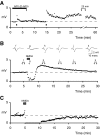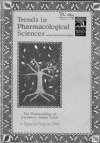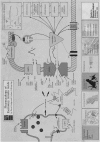The 1980s: D-AP5, LTP and a Decade of NMDA Receptor Discoveries
- PMID: 30284673
- PMCID: PMC6420420
- DOI: 10.1007/s11064-018-2640-6
The 1980s: D-AP5, LTP and a Decade of NMDA Receptor Discoveries
Abstract
In the 1960s and 70s, biochemical and pharmacological evidence was pointing toward glutamate as a synaptic transmitter at a number of distinct receptor classes, known as NMDA and non-NMDA receptors. The field, however, lacked a potent and highly selective antagonist to block these putative postsynaptic receptors. So, the discoveries in the early 1980s of D-AP5 as a selective NMDA receptor antagonist and of its ability to block synaptic events and plasticity were a major breakthrough leading to an explosion of knowledge about this receptor subtype. During the next 10 years, the role of NMDA receptors was established in synaptic transmission, long-term potentiation, learning and memory, epilepsy, pain, among others. Hints at pharmacological heterogeneity among NMDA receptors were followed by the cloning of separate subunits. The purpose of this review is to recognize the important contributions made in the 1980s by Graham L. Collingridge and other key scientists to the advances in our understanding of the functions of NMDA receptors throughout the central nervous system.
Keywords: APV; D-AP5; Long-term potentiation (LTP); NMDA; NMDA receptors; Synaptic plasticity.
Conflict of interest statement
The authors have no competing interests to declare.
Figures



References
-
- Hebb DO. The organization of behavior: a neuropsychological theory. New York: Wiley; 1949.
-
- Andersen P. Interhippocampal impulses. III. Basal dendritic activation of CA3 neurons. Acta Physiol Scand. 1960;48:209–230. - PubMed
-
- Lømo T. Frequency potentiation of excitatory synaptic activity in the dentate area of the hippocampal formation. Acta Physiol Scand. 1966;68(Suppl. 277):128.
-
- Kandel ER, Spencer WA. Cellular neurophysiological approaches in the study of learning. Physiol Rev. 1968;48:65–134. - PubMed
Publication types
MeSH terms
Substances
Grants and funding
LinkOut - more resources
Full Text Sources

